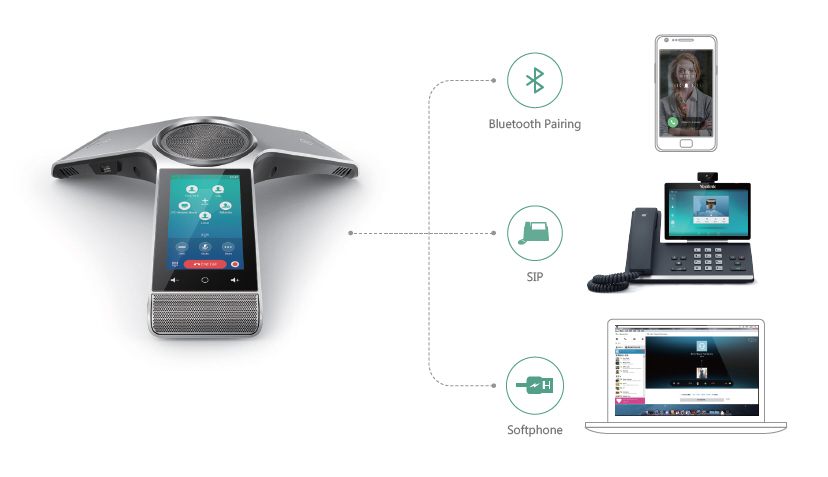Introduction
In today’s fast-paced business environment, communication plays a vital role in ensuring smooth operations and fostering relationships. As technology continues to evolve, the landscape of communication systems is shifting towards more efficient and innovative solutions. Two prominent contenders in this arena are Voice over Internet Protocol (VoIP) and Private Branch Exchange (PBX) systems. Understanding the differences between these two technologies, particularly regarding their installation processes, can significantly impact an organization’s decision-making when selecting a phone system. This article will delve deep into the nuances of "VoIP vs PBX: An In-Depth Look at Installation Process Differences", providing you with the knowledge needed to make an informed choice.
Understanding VoIP Phone Systems
What is VoIP?
Voice over Internet Protocol, or VoIP, refers to a technology that allows voice communications to be transmitted over the internet rather than traditional telephone lines. With VoIP phone systems, users can make calls using internet connectivity instead of conventional copper wires.
How Do VoIP Phone Systems Work?
VoIP phone systems convert analog voice signals into digital data packets, which are then sent over the internet. This process involves several components:
Internet Connection: A stable and robust internet connection is crucial for optimal performance. VoIP Phones: These specialized devices can connect directly to the internet or through a computer. VoIP Service Provider: Companies that offer VoIP services manage call routing and other features. Gateway: For businesses transitioning from traditional telephony, gateways facilitate connections between legacy systems and VoIP.Benefits of Using VoIP Phone Systems
- Cost Efficiency: Lower operational costs due to reduced long-distance calling rates. Scalability: Easily add or remove lines as needed without significant infrastructure changes. Advanced Features: Access to features like voicemail-to-email, call forwarding, and video conferencing. Mobility: Employees can communicate from anywhere with an internet connection.
Exploring PBX Systems
What is PBX?
Private Branch Exchange (PBX) is a private telephone network used within an organization. It allows internal communication between users while enabling them to share external phone lines for making outside calls.
Types of PBX Systems
Traditional PBX: Utilizes physical hardware installed on-site, requiring significant upfront investment. Hosted PBX: A cloud-based solution where service providers manage the infrastructure remotely. Virtual PBX: Focuses on basic features without needing extensive hardware or installation.Benefits of Using PBX Systems
- Control Over Infrastructure: Businesses retain complete control over their telecommunication setups. Reliability: Traditional PBX systems are less dependent on internet connectivity. Customization Options: Tailored solutions based on specific organizational needs.
VoIP vs PBX: An In-Depth Look at Installation Process Differences
Both VoIP and PBX systems have unique installation processes that cater to their respective technologies. When discussing these differences, it's essential first to identify what each entails.
Installation Process for VoIP Phone Systems
Planning Stage:- Assess current infrastructure and determine bandwidth requirements. Choose a suitable VoIP provider based on features and pricing.
- Install necessary equipment such as routers, switches, and phones. Configure Quality of Service (QoS) settings for optimal call quality.
- Set up user accounts and configure call routing preferences through the service provider's platform.
- Conduct test calls to ensure everything functions correctly before going live.
- Provide training sessions for staff on how to use new features effectively.
Installation Process for PBX Systems
Needs Assessment:- Determine the number of lines required and assess existing infrastructure capabilities.
- Acquire necessary equipment such as servers for traditional PBX or choose a hosted solution.
- Install hardware according to manufacturer specifications; this may involve professional assistance.
- Customize features including extensions, voicemail boxes, and call routing protocols.
- Thoroughly test all functionalities before rolling out across the organization.
- Schedule regular maintenance checks to ensure optimal performance over time.
Key Differences in Installation Processes Between VoIP and PBX
| Feature | VoIP Installation | PBX Installation | |-----------------------|--------------------------------------|-------------------------------------| | Complexity | Generally simpler | Can be complex if traditional | | Equipment Requirements | Minimal; primarily network devices | Requires dedicated hardware | | Time Frame | Quick setup; often same-day | Longer setup time | | Technical Expertise | Basic IT knowledge sufficient | Advanced technical skills needed | | Scalability | Easily scalable without major changes | Requires additional hardware |
Factors Influencing Your Choice Between VoIP and PBX
When deciding between these two systems, consider various factors:
Budget Constraints
If you're operating on a tight budget, opting for a VoIP phone system may provide more cost-effective solutions compared to investing in traditional hardware for a PBX system.
Business Size and Growth Plans
For small businesses planning rapid growth or those with fluctuating needs, flexible scalability offered by VoIP could be advantageous compared to more rigid structures associated with traditional PBXs.
Existing Infrastructure Compatibility
If your organization already utilizes extensive telecommunication infrastructure supporting traditional line setups, transitioning directly to a fully cloud-based solution might pose challenges requiring careful planning and consideration.
Technical Support Availability
Consider whether you have access to in-house technical support capable of managing installations or if you’ll rely heavily on third-party providers for assistance during initial setup stages—this can significantly impact both time frames involved as well as ongoing maintenance needs down the road!
Common Misconceptions About VoIP Phone Systems vs Traditional PBXs
Many myths surround both technologies that may lead businesses astray during their decision-making processes:
Myth #1: All Internet Connections Are Sufficient For Quality Calls With VOIPs!
While it’s true that high-speed broadband connections typically work well enough most times; unreliable networks can cause dropped calls & poor audio quality—making it essential always conduct thorough assessments beforehand!
Myth #2: You Need Extensive Technical Knowledge To Operate A Modern Day VOI System!
Contrary perhaps many laypeople assume they’ll require expert-level understanding just get started using them—most modern-day devices designed specifically simplify usage allowing anyone familiar basic operations navigate easily!
FAQs about VoIP vs PBX Installation Processes
1. What is the primary difference between VoIP and traditional phone systems?
The primary difference lies in how calls are transmitted; while traditional phone systems rely on physical copper wires connected directly through telephony networks — Voice over Internet Protocol transmits voice data via digital packets sent through an internet connection instead!
2. Do I need special equipment for installing a VoIP phone system?
Yes! Although not extensive like those required by typical Private Branch Exchange setups; having reliable routers & switches compatible with your chosen service providers ensures seamless implementation when setting up any new VOI system at work!
3. How long does it usually take to install either type of system?
Installation duration varies based upon complexity involved—however generally speaking simple configurations associated with VOIs may only take hours while more elaborate arrangements linked back old-school models could span several days depending size scope desired functionality levels required overall!
4.What happens if my internet goes down while using VOIPs?
If your internet connection fails during use—calls will drop until connectivity resumes—but most modern services allow fallback options like forwarding calls elsewhere so clients remain able reach you even amidst disruptions occurring unexpectedly!

5.Can I keep my existing numbers when switching from one type another?
Yes! Both types commonly support number portability allowing businesses transfer previously established contact information smoothly whenever transitioning onto newer platforms seamlessly without losing valuable customer connections throughout process itself!

6.Is ongoing maintenance required once either type has been successfully installed?
Absolutely! Regular checks should occur routinely regardless which option selected ensure everything http://titusflik696.bearsfanteamshop.com/how-user-friendly-should-your-voip-phone-system-be remains functioning optimally & efficiently over extended periods time without experiencing unnecessary interruptions impacting productivity levels adversely affecting revenue streams driven timely communication efforts achieved consistently across board!
Conclusion
In conclusion, understanding "VoIP vs PBX: An In-Depth Look at Installation Process Differences" provides valuable insights into choosing the right phone system for your business needs—be it flexibility & cost efficiency found within cutting-edge Voice over Internet Protocol technologies versus reliability & control associated with Private Branch Exchanges traditionally utilized before widespread adoption newer innovations emerged recently reshaping landscape altogether! Ultimately finding balance among key considerations outlined above enables organizations thrive amidst ever-evolving challenges presented modern-day workplaces demanding streamlined effective communications across all levels management hierarchy alike!
